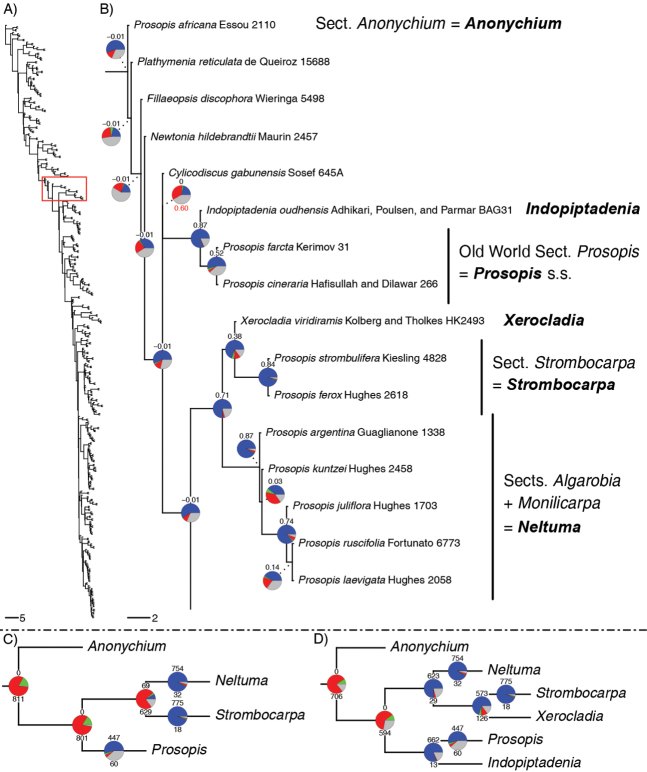Figure 1.
A Phylogeny of the Caesalpinioideae showing the placement of the Prosopis grade (boxed in red) within the subfamily, based on analyses of DNA sequences of 997 nuclear genes (Ringelberg et al. 2022) B the part of the phylogeny that includes all elements of Prosopis s.l. Genera recognised in the new generic system presented here are in bold. Pie charts show the fraction of gene trees supporting that bipartition in blue, the fraction of gene trees supporting the most likely alternative configuration in green, the fraction of gene trees supporting additional conflicting configurations in red and the fraction of uninformative gene trees in grey. Numbers above pie charts are Extended Quadripartition Internode Certainty (Zhou et al. 2020) scores. Branch lengths are expressed in coalescent units and terminal branches were assigned an arbitrary uniform length for visual clarity, see Ringelberg et al. (2022); the root is not drawn to scale C, D the two most likely alternative tree topologies which would allow for a monophyletic Prosopis s.l., either without (C) or with (D) Xerocladia and Indopiptadenia. In C and D numbers above pie charts = number of gene trees supporting the species tree, numbers below pie charts = number of gene trees conflicting with the species tree C lack of gene tree support (just 69 gene trees) for the alternative species tree topology where sections Algarobia + Monilicarpa (≡ Neltuma) are sister to section Strombocarpa (≡ Strombocarpa) vs. 573 genes supporting a sister group relationship between Strombocarpa and Xerocladia (as shown in D) D lack of gene trees (zero gene trees) supporting a monophyletic Prosopis s.l.

